Interpret Tenderly simulation results
A Tenderly Simulation report is a detailed analysis of an EVM blockchain transaction run in a simulated environment using Tenderly. The simulation allows you to test transactions in a safe, isolated environment before actually executing them on-chain. You can double check the change of balances among involved addresses, contract events triggered during execution such as delegate calls and gas fee usage.
The simulation report contains a number of parameters pertaining to the transaction. The key features of the report for you to consider are the following:
- Overview: Summarises transaction execution, including success/failure status and gas usage.
- Summary : Displays balance changes amongst all the addresses involved and a detailed transaction trace.
- Contracts: Contains a list of all project and publicly verified contracts involved in the transaction.
- Events: Displays emitted logs and contract events triggered during execution.
- State: Shows changes in contract storage, balances, and variable values after execution.
.
Note
- For Multisig Transactions (2 of 3, 3 of 5 etc.), Liminal will simulate every transaction as 1 of n i.e. Liminal will assume you are final signer for the purpose of simulation. Currently, the To address in the overview is actually the address of the safe contract you are sending the funds from.
Each of the above features are described below.
Summary
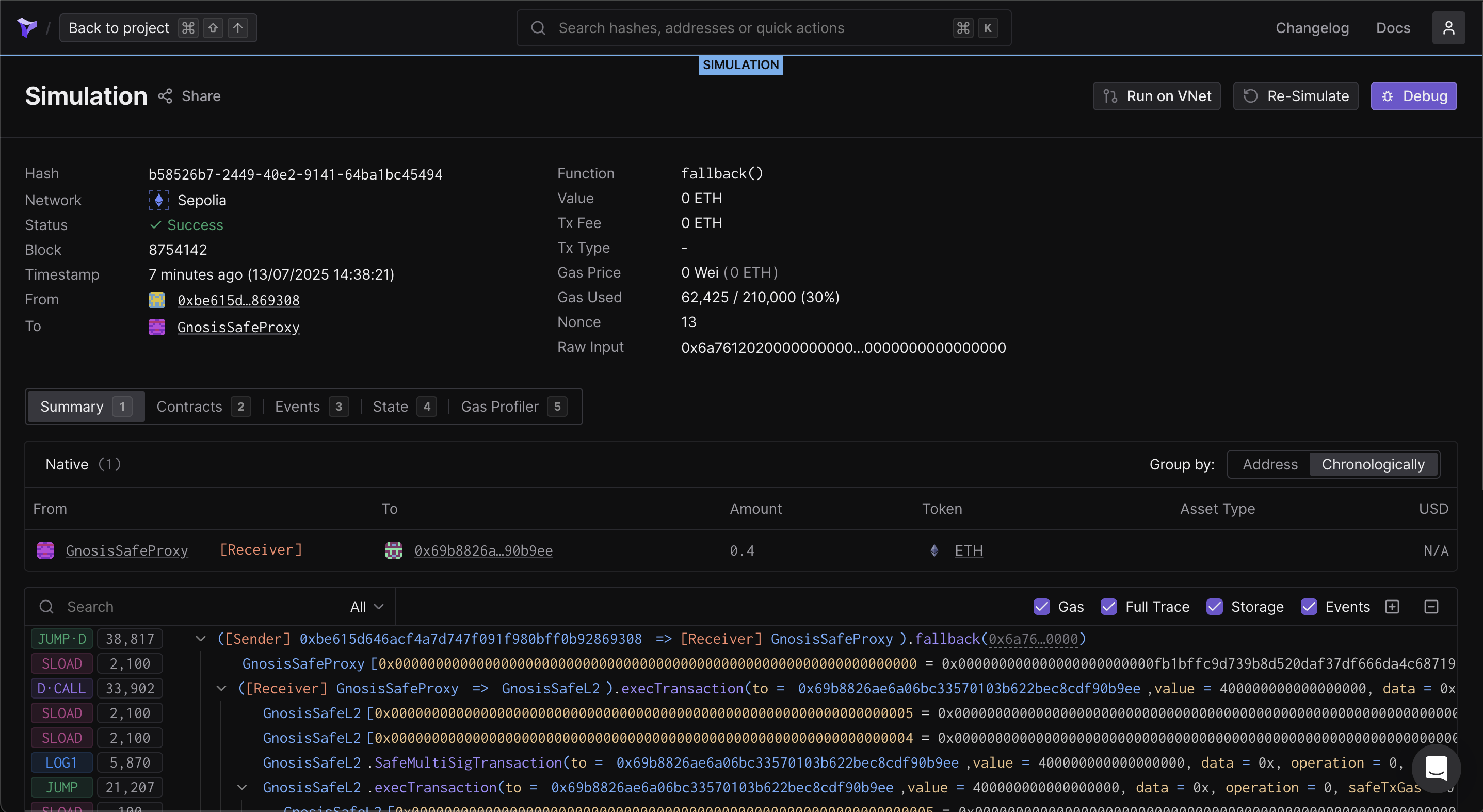
- For Multisig EVM transactions using Gnosis Safe Contracts, the from address will be labelled as a Safe proxy, however you can hover over the label and copy paste the address to check if its the intended address
- You can clearly check the balance changes among the addresses in a single row chronologically or by grouped rows
Contracts
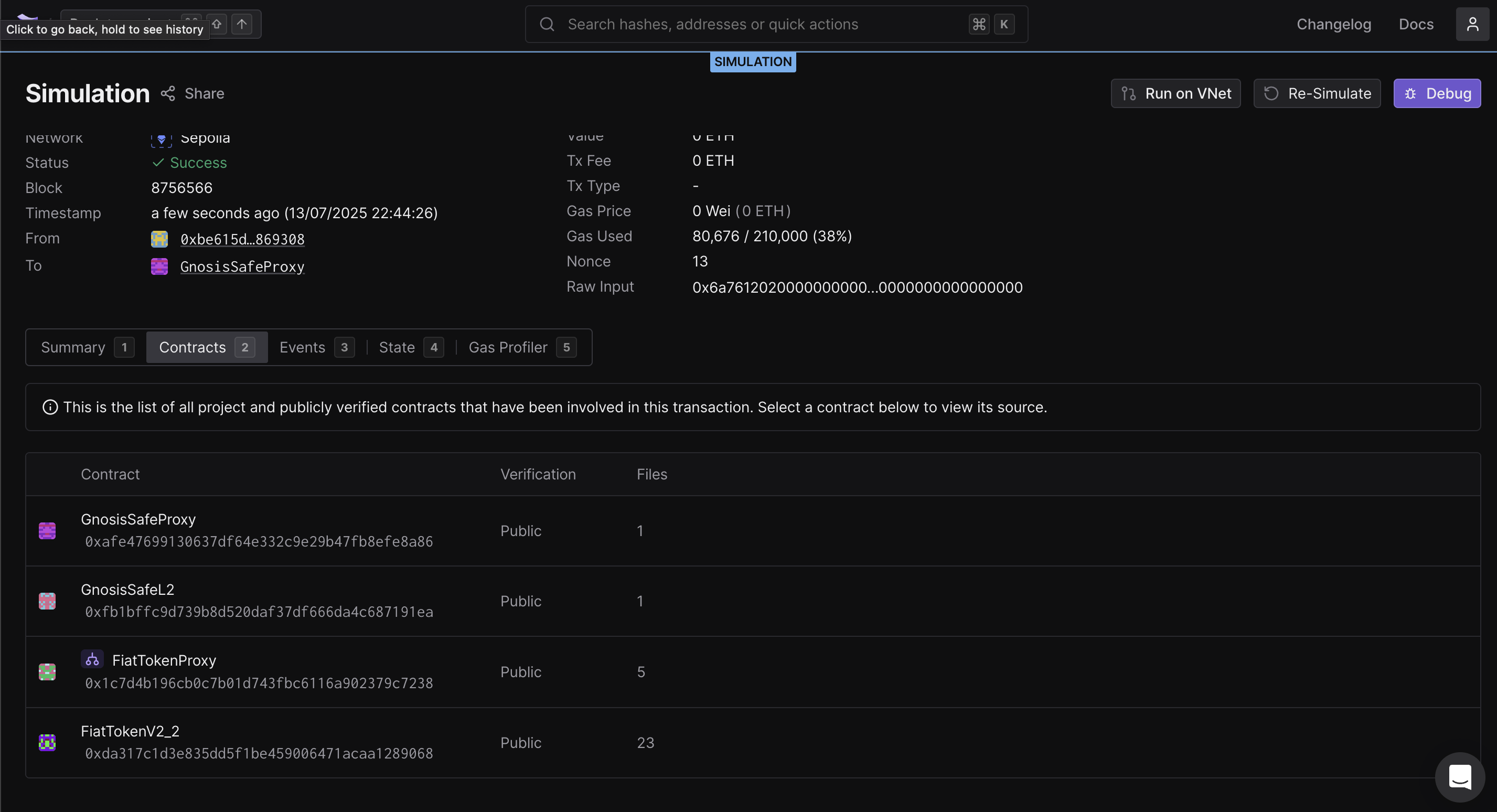
- Above transaction is a simulation of a USDC token transfer on ETH sepolia network, showing the USDC official token contract address and the Gnosis contracts (including from address) involved
- A Mobile MPC token transfer transaction will not include Gnosis Safe contracts.
- A Mobile MPC native coin transfer transaction will not include any contracts in the transaction and this section will be empty
Events
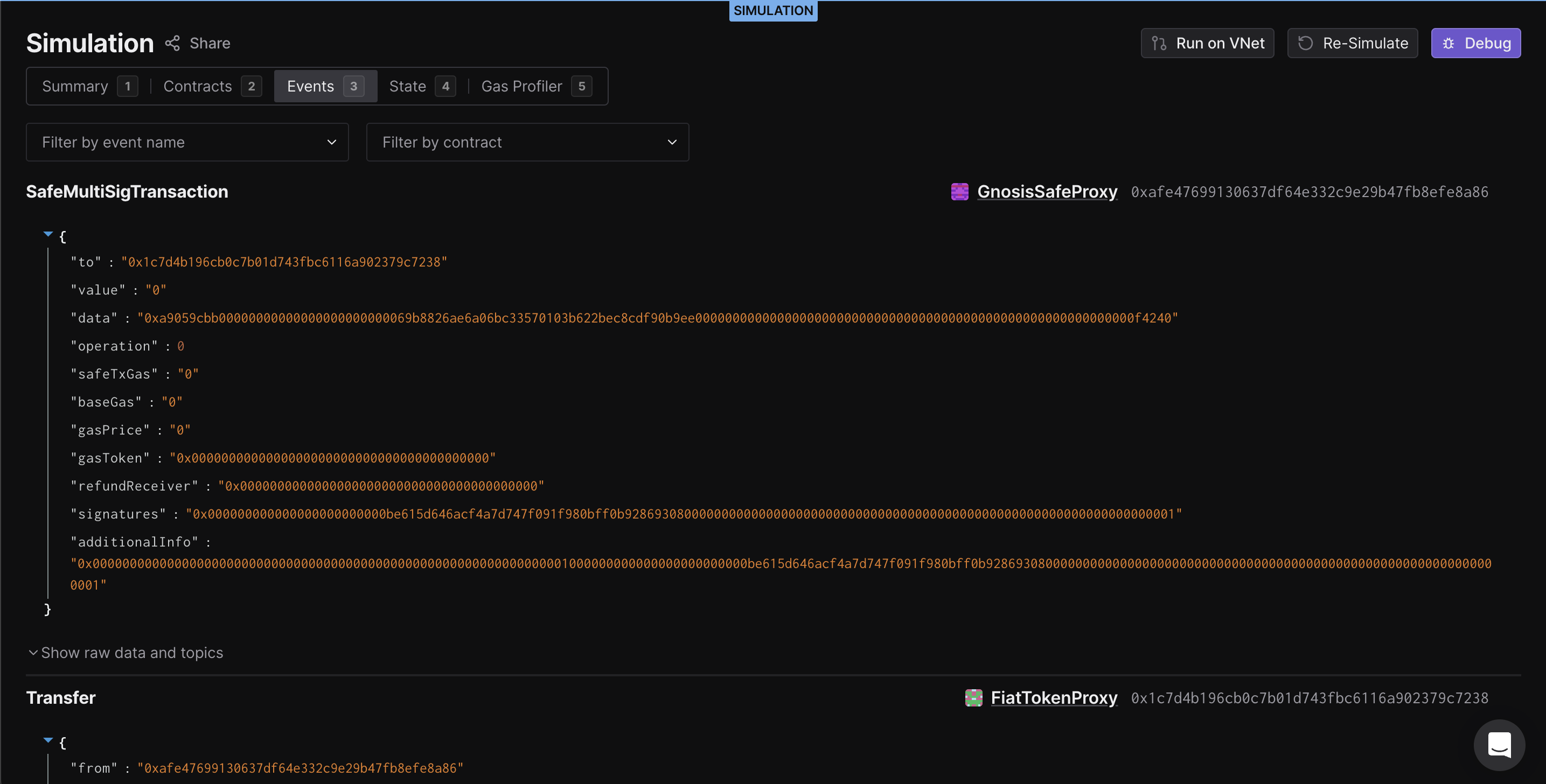
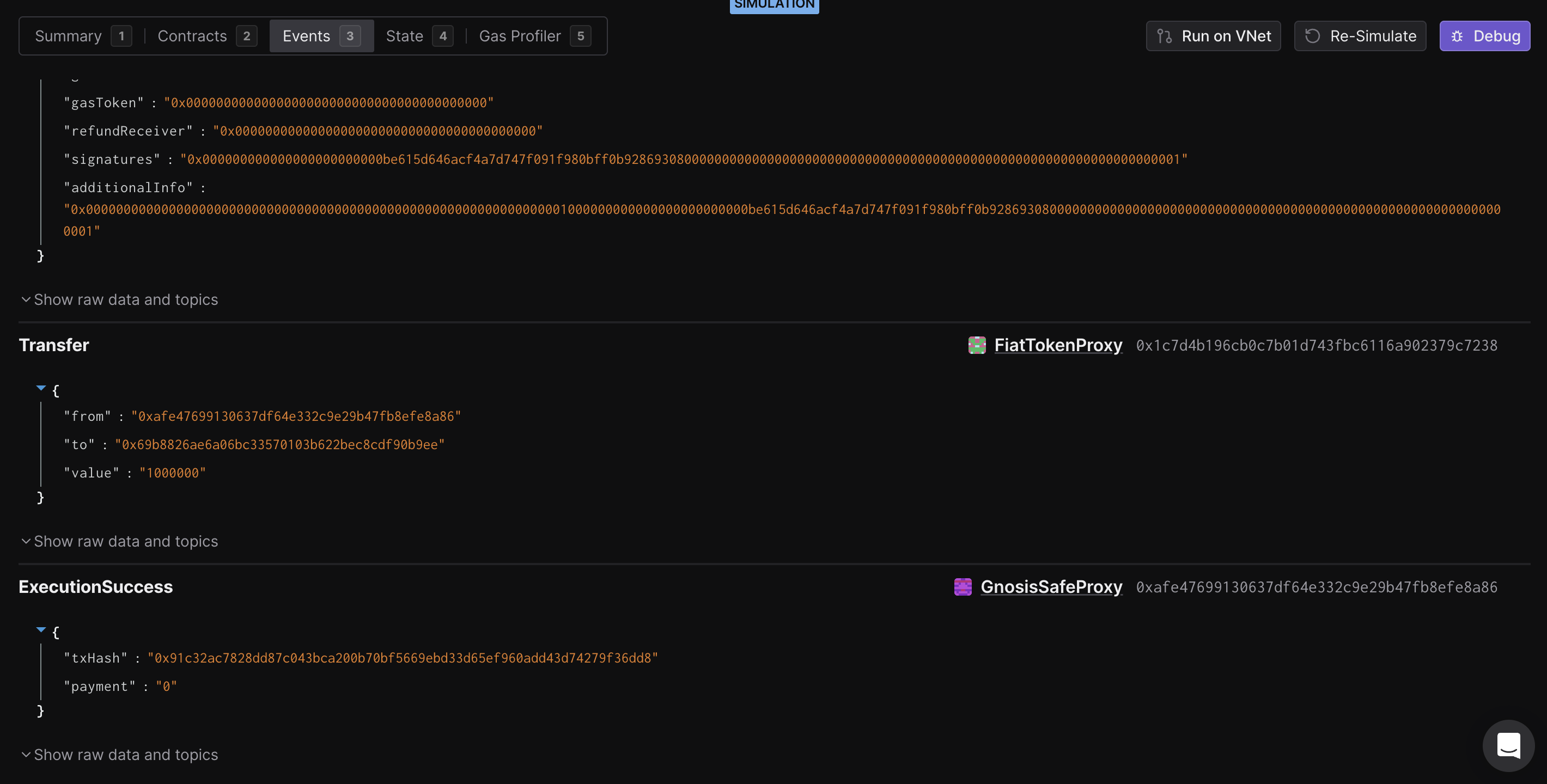
- A token transfer simulation will typically generate the following types of events:
- SafeMultiSigTransaction (or similar): Emitted by the contract that initiates the transfer (e.g. a multisig wallet). The event data contains the input parameters, plus any additional fields needed by the multisig mechanism.
- Transfer: Emitted by the token contract. The event includes the from and to addresses, and the amount of tokens transferred. If a proxy contract is involved, it may emit this event on behalf of the underlying token contract.
- ExecutionSuccess (or similar): Emitted by the recipient address to confirm successful receipt of the tokens. May include the transaction hash and any relevant payment information.
State
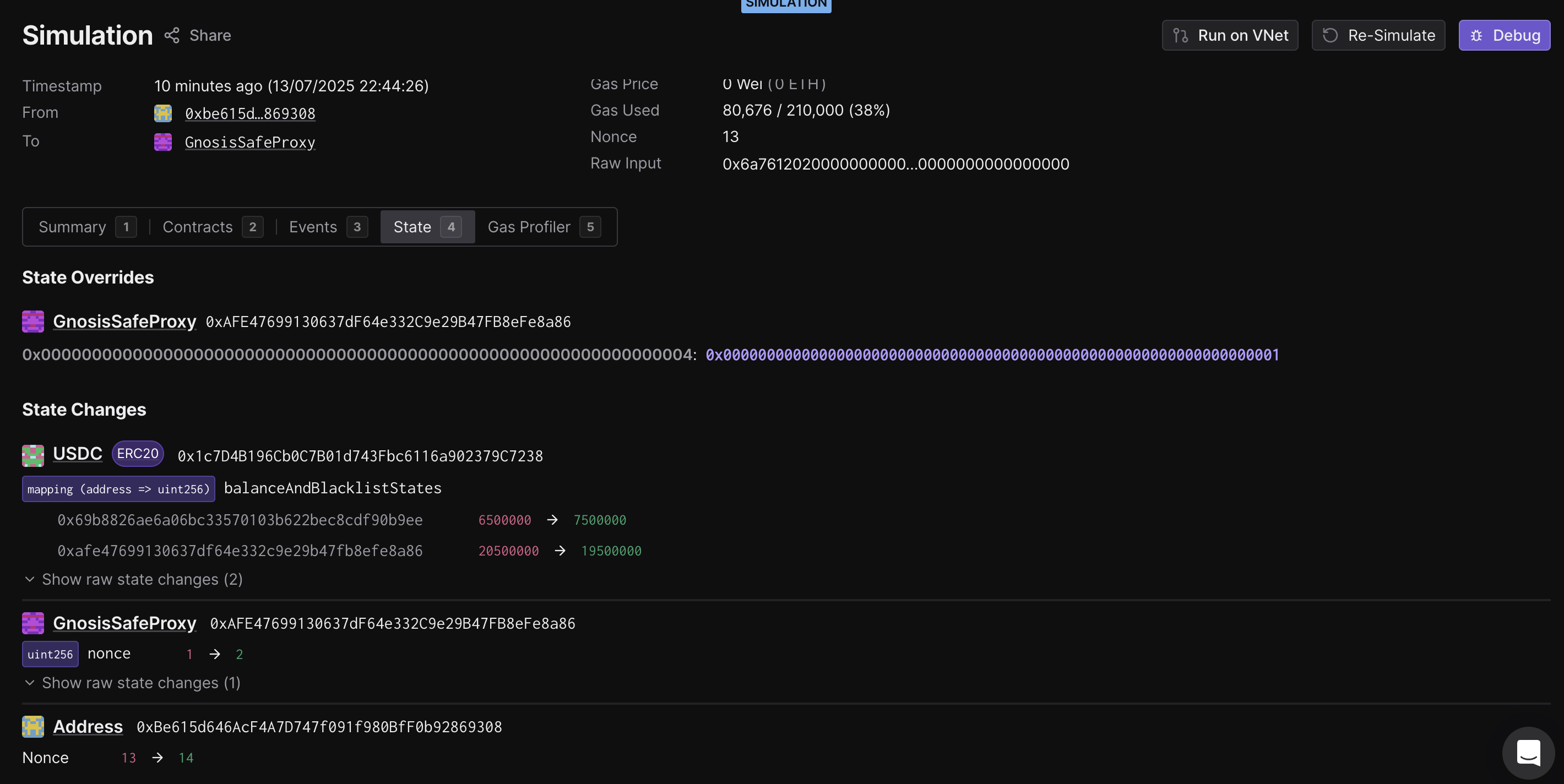
- The simulation will typically show state changes for:
- The recipient address, updating its token balance or related storage slots (balance changes to addresses are displayed in wei )
- The address initiating the transfer (e.g. multisig wallet), incrementing its nonce to reflect the sent transaction
Important Note
- Tenderly simulations might fail due certain internal reasons or Tenderly service provider being down. In that case you can retry the simulation three times without which it will not allow you proceed. Even after 3 retries if the simulation fails, you will still be able to proceed with the transaction signing without the simulation report or you can try the transaction again later (recommended)
Updated 3 months ago
